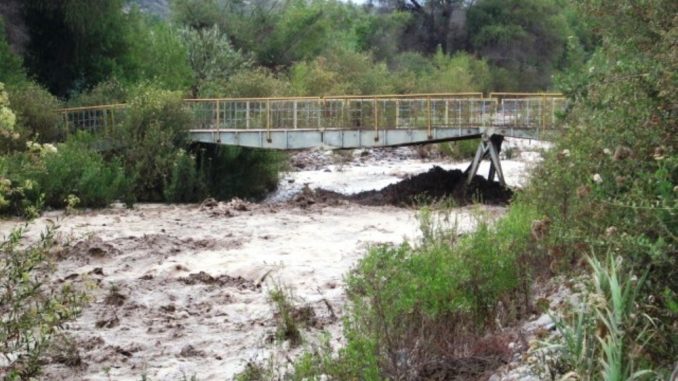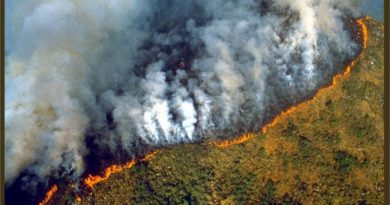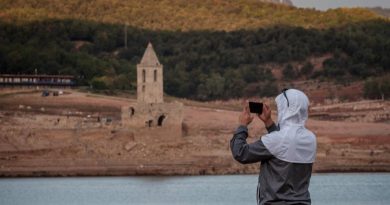Peru: Compañía Minera Southern Copper, the patron of evil
¨Compañero, this is now the Lead River, It is named officially ... ..hace 30 years was the Green River ». You've told us agrarian leaders of Moquegua, province of southern Peru near the border with Chile.
reavers corporations
Almost daily we are in Latin America with repercussions of the effects of environmental pollution from mining product. In our region we remember again and again this anecdote fire that marks the devastating effects of an industry marginalization condemning thousands of small farmers and threatening the health of millions.
When the mining conflict erupts regularly Tia Maria in the region of Arequipa, or when we see the devastating effects in Ecuador, Chile, Argentina, the Amazon rainforest in Brazil, or Mexico we feel the need to continue research for years and we do from the Ecosocialist RED, the scope, the reasons and the consequences this criminal activity has for hundreds of thousands of workers daily.
That's why today we dedicate these lines to inform us about the history of Southern Copper and Grupo Mexico (GM), of which is subsidiary. The Peruvian government has decided once again to grant the company the license to build the mine in Arequipa, when coincidently this company news again in Mexico for having polluted the sea.
The day after that Southern announced that the Ministry of Energy and Mines of Peru (minem) He gave green light to exploit copper deposits Tia Maria and La Tapada, GM shed 3,000 liters of sulfuric acid in the Sea of Cortez, "An area of enormous biological wealth ', the newspaper El País and was considered by water expert from the National Autonomous University of Mexico (ONE), Elena Burns, as an "environmental crime". "They are substances that poison marine life ', He said.
This new spill occurs a few years after the biggest natural disaster in the history of Mexico: Spill 40,00 cubic meters of toxic metals in the Sonora River, GM responsibility. He 6 of August 2014, Buenavista del Cobre, GM company, he shed 40 thousand cubic meters of copper sulfate to Bacanuchi and Sonora rivers in Mexico. The Standing Committee was formed considered that this is a case of ecocide, since the spill has also affected livestock and agricultural activities in the area. The Federal Attorney General for Environmental Protection of Mexico has estimated the cost of the spill is $1.800 millions. Greenpeace considered that environmental damage in the area is irreversible.
And who is the owner of this company? On its website indicates that GM's chairman German Larrea Mota Mexican-Velasco, a mysterious man, as it is the second millionaire in his country, but almost invisible to public opinion.
In September 2014, Mexico Forbes devoted an article because of his public appearance with former President Enrique Peña Nieto. according to Forbes, Larrea's fortune is 15,700 millions of dollars. And when they wanted to interview him to answer questions about their companies, He disappeared. At 2015, Mexico Process weekly published an article entitled "Grupo Mexico exports to Peru ... strikes, dead, pollution and corruption ", in which realized the socio-environmental conflict in Arequipa.
Returning to Peru
Let the origin. Southern Peru Copper Corporation was created in 1952 and he has always acted in the south of the country with the Toquepala and Cuajone mines.
"When Southern began operations in the fifties, Product severely polluted the coast of casting processes and creating Tailings. At least Ilo Valley was contaminated product of its toxic emissions made ".
For example, for its mining activity from 1960 until 1996, the company poured 785 million tons of mine tailings in the Bay of Ite tacneña. At 2015, the municipality of this district denounced mining pollution in the area of wetlands and demanded that Southern remedy the damage. The company had promised to run the "drainage and land reclamation", but he never fulfilled.
In the province of Ilo (the port of Moquegua ), It was already reported in the 2013, an envelope index sulfur dioxide pollution in casting Southern a top level 190 ug / m (micrograms per cubic meter) in the zone (the maximum limit is 80 and / m3). In March, the company announced the construction of a new smelter at Ilo and said this was not conditioned by Tia Maria.
In the district of Torata-Mariscal Nieto, farmers protested against the company, which they were charged with polluting water and the product air extraction activities Cuajone. The leader Samuel said Southern Coayla was making fun of their demands.
In January 2015, Environmental Prosecutor ordered two and a half years of deprivation of liberty and payment of civil damages of 1 million dollars for the CEO of Southern Peru, Mexican Oscar Gonzalez Rocha, for the alleged crime of environmental pollution in the sea of Ilo.
On the other hand, Apurimac, for the project "Los Chancas", Southern built roads, destroyed fields and installed pumps to bring water to the drilling machinery, thus polluted water hosing natural pastures. At 2001, the suspension of exploration work requested. Nevertheless, the authorities did not take into account and there have been several clashes between villagers and workers of the company. The last recorded is October 2014, when citizens reacted when mining equipment and heavy machinery moved to Camp Mine.
The leaders claimed that the problem is the attitude of the company, it seems accustomed to impose and then look for "dialogue".
"It is not the first time the company Southern Peru wants to impose its criteria. Make 14 years we are confronted by the same attitude, which we reject ", said Eulogio Perez, activist Abancay.
These and other data explain why the north to the south of our American companies like Southern generate much rejection among the population.
Of course Southern, or any of the similar companies, They could have been developed without the complicity of various governments that time and again insist on this type of highly profitable projects for companies. Capitalism shows once again, one of his toughest faces, the gain at the expense of condemning millions. Again, will be only communities, democratically choosing productive development models, who with the support of state planning can solve this dilemma iron in which life is at stake and future generations, so that the lead again be Rio Verde.
Alberto Giovanelli




